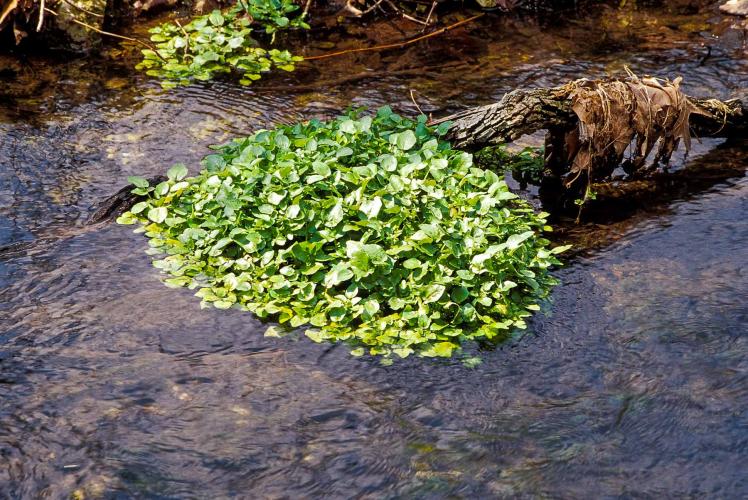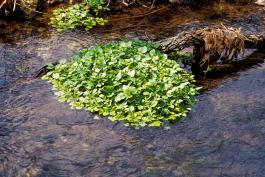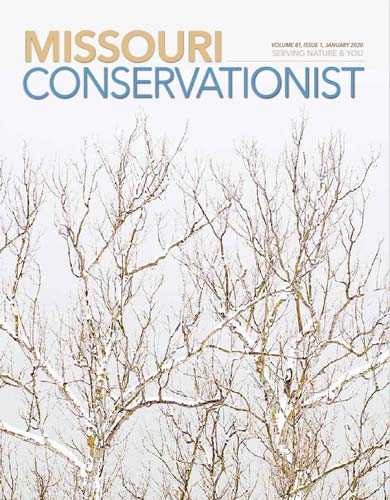Watercress | Nasturtium officinale
Status
Common
Size
Up to 10 inches high
Distribution
Southern and central Missouri
Most common in and around the cold waters of springs and spring branches, watercress is also found in fens, marshes, and ditches. Botanists have long pondered its origins. For a long time, people pointed to watercress’s presence at remote spring branches as evidence that it is native. However, those locations were not as pristine as formerly believed. Today most agree that it is in fact an old-world species that was introduced to North America.
Did You Know?
Watercress is part of the mustard family. In fact, “cress” is used for a variety of edible, peppery plants in the mustard family. Watercress has a tangy flavor and is used as a salad green. Collect it in the wild from reputable sources, but wash it thoroughly before eating it.
Life Cycle
Watercress is a perennial aquatic plant that grows even during the winter submerged in, floating on, or emerging from water. It is a lush green plant, often forming bushy colonies. Its flowers, small and white, bloom between April and October.
Ecosystem Connections
Humans are not the only ones to eat watercress. Fish, birds, and mammals nibble its greens, as do numerous aquatic insects, snails, and more. It often hosts masses of aphids.


Also In This Issue

This Issue's Staff
Editor - Angie Daly Morfeld
Associate Editor - Larry Archer
Staff Writer - Bonnie Chasteen
Staff Writer - Heather Feeler
Staff Writer - Kristie Hilgedick
Staff Writer - Joe Jerek
Art Director - Cliff White
Designer - Les Fortenberry
Designer - Marci Porter
Photographer - Noppadol Paothong
Photographer - David Stonner
Circulation - Laura Scheuler






















